
Natal Stamps
Personally I am very much interested in South African stamps (specifically the commonwealth ones) due to its complex philatelical development over the past decades and the various colonies and republics which formed the federation. South Africa became a nation, as opposed to just being a geographical term, with the creation of the Union of South Africa on 31st May 1970. The philatelic history of South Africa continued with the establishment of Republic of South Africa in 1994. The various colonies and republics that form the very rich South African philatelic history are as follows:
1. Cape of Good Hope (British Kaffraria, Mafeking Siege Stamps, Vryburg)
2. Criqualand West
3. Natal
4. New Republic
5. Orange Free State (orange River Colony)
6. Transvaal (Pietersburg, Local British Occupation Issues)
7. Zululand
8. British Army Field Offices during South African war
9. Union of South Africa
10. Republic of South Africa
11. Bophhuthatswana
12. Ciskei
13. Transkei
14. Venda
Natal or as it is known in Afrikaans: Province van Natal was a province is South Africa from 1910 to 1994. Prior to that it was proclaimed a British Colony from 4th May 1843 to 1910. Pietermaritzburg was its capital, The first Natal stamps were issued in 1843 on coloured wove papers. These were a set of 7 embossed stamps ranging from the 1d value up to 1s. When used on cover, these stamps were mostly pen cancelled.
Below are some examples of these embossed stamps in plain relief on coloured wove paper:
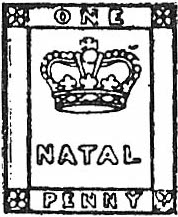 |
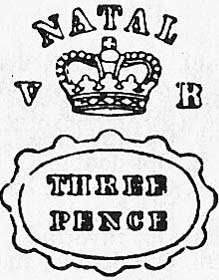 |
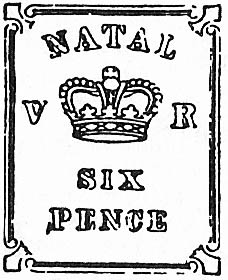 |
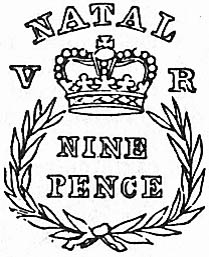 |
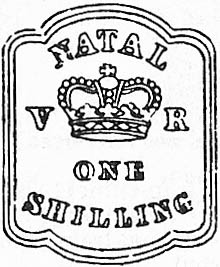 |
Although Natal was one of the earliest in the field of issuing stamps, it never enjoyed the popularity and appreciation received by other classic issues, such as world's first stamp "Penny Black" in 1840 or even Cape of Good Hope issues of "Cape Triangulars" in 1853.
This could be due to the fact that at the beginning there was no proper postal services in Natal until 1850, when the first Government Post Offices were established on February of that year, at the capital Pietermaritzburg, D'Urban, Bushman's River (later Estcourt) and Klip River (later Ladysmith). Prior to that, the postal facilities were limited as they were established by various missionaries. Other “Private Post Offices” were also created between Pietermaritzburg and Durban, in March 1846, by Natal Witness newspapers which were mainly used by their subscribers. More government post offices were opened initially Pinetown, Richmond, Verulam, Howick, Mooi River, Colenso, Weenen, Sterkspruit (later Caversham), Greytown, Umhlali, Umzinto and Isipingo by 1859. By 1880 the number of post offices in Natal had passed over 70. This saw the end of private postal services.
With the opening of the government post offices, the public had the option to use pre-paid stamps at a lower cost of than non-prepaid rate:
- local letters were charged at 1d per half ounce with pre-paid as compared to 4d for non pre-paid
- overseas letters were charged at 6d per half ounce and these needed to be pre-paid
- the solders’ letters bearing the signature of the commanding office, had a preferential rte of 1d, this was also the case for newspapers
However on the introduction of postage stamps in 1857, pre-payment of the postages was made obligatory for all letters.
Later issues of Natal stamps feature the “Chalon” portrait with the word "Postage" overprinted on each side of the stamp - although issues continue right up to the time that Natal was incorporated into the Republic of South Africa - with a particularly fine set of Edward VII issues to £20.
On 31st May 1910 combined with three other colonies, Natal formed the Union of South Africa. It is now called the KwaZulu-Natal province of South Africa.
Below are some examples of Natal Stamps:
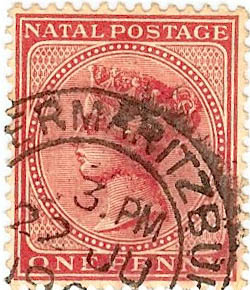 |
1882-89 1d Carmine Queen Victoria |
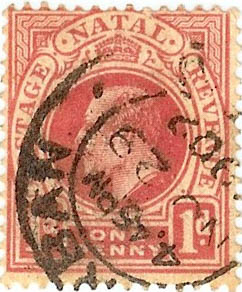 |
1902-03 1d Carmine King Edward VII with POSTAGE REVENUE Inscription |